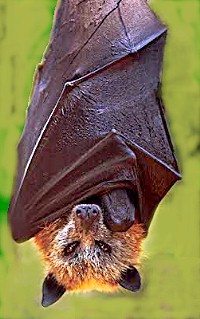We all know that bats prey for a tiny pieces of «meal» with echolocation — they cry loadly and listen to echoed signal.
Sounds good :О)
Lets try to look at numbers a bit closer.
Unfortunately, English Wikipedia does not show these numbers, but Ukrainian page about bats says that «bats emit short sounds with frequency of 20–120kHz and duration of 0.2–100 ms».
So, duration of sound «pattern» may vary, I don’t know why and what is the reason, anyway — I’ll use relatively short impulse length, one milisecond.
Now we will remember what is the speed of sound in air — it is about 343 m/s.
These numbers give us typical impulse length — 34.3 cm.
Well… The length of an impulse is the precision of «measurement» — bats can not measure more precise then «somewhere there, 30 cm left or right»… And… I’ve used one millisecond impulse, not 100…
Actually, everything is far more optimistic and funny — bats «cry» signals with varying frequency, catch echoed signal and… calculate convolution. They obtain Dirac delta function, short peak. Bats know what is «radar jamming», linear-frequency modulated signal, they can deal with integrals. A lot like «real» radar jamming and deception (sorry, I’m confused! — what is «real» radar jamming now?-).
Moreover, they can switch their receiver off while transmitter emits sound — to protect their receiver…
But… I can not understand, anyway, how they can distinguish — with this fantastic speed and precision — between insect and thin branch or little flower… They fly very beautifully between branches and catch insects.
How?.. :-)

просто неймовірно.
тирю собі ;)
:O)